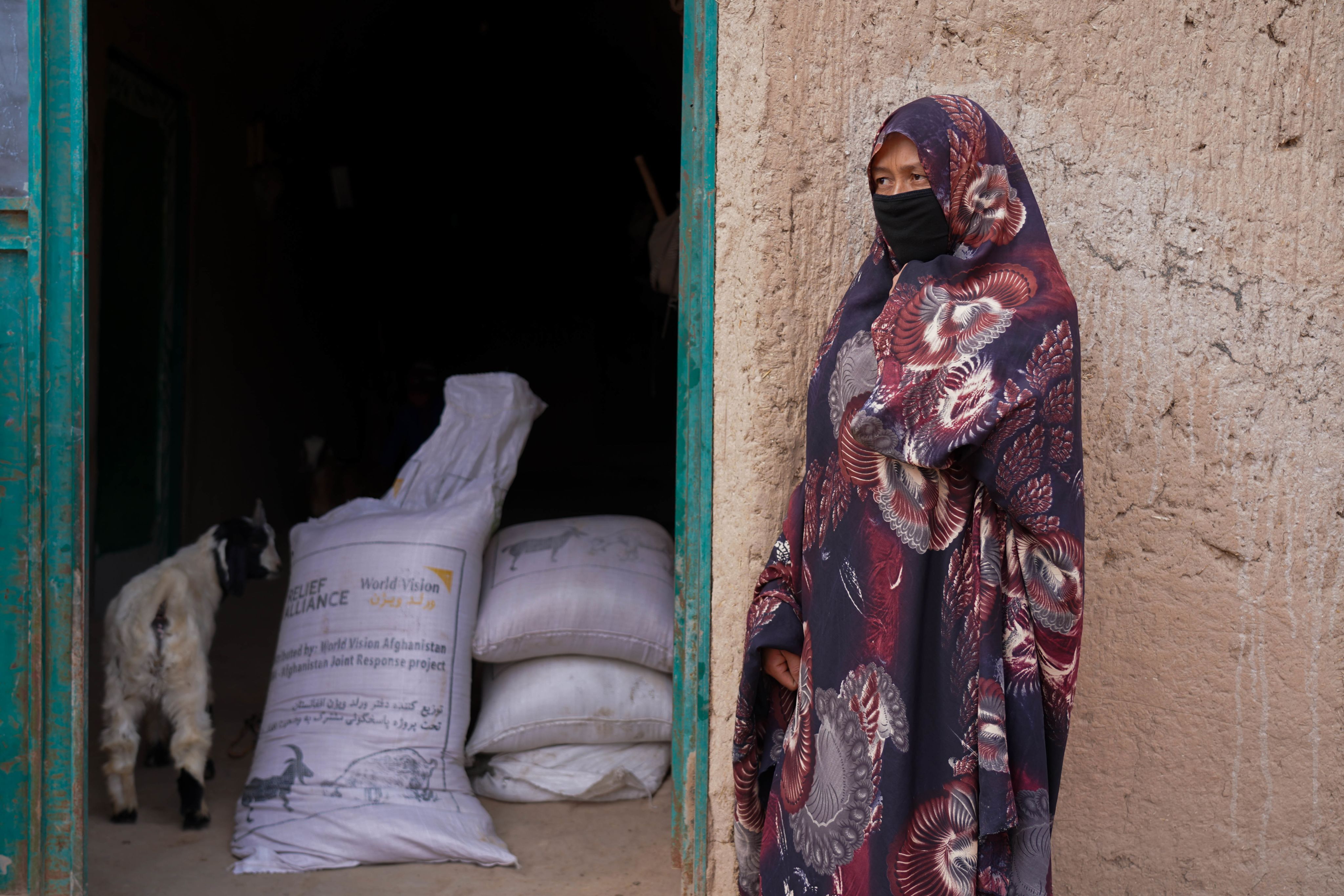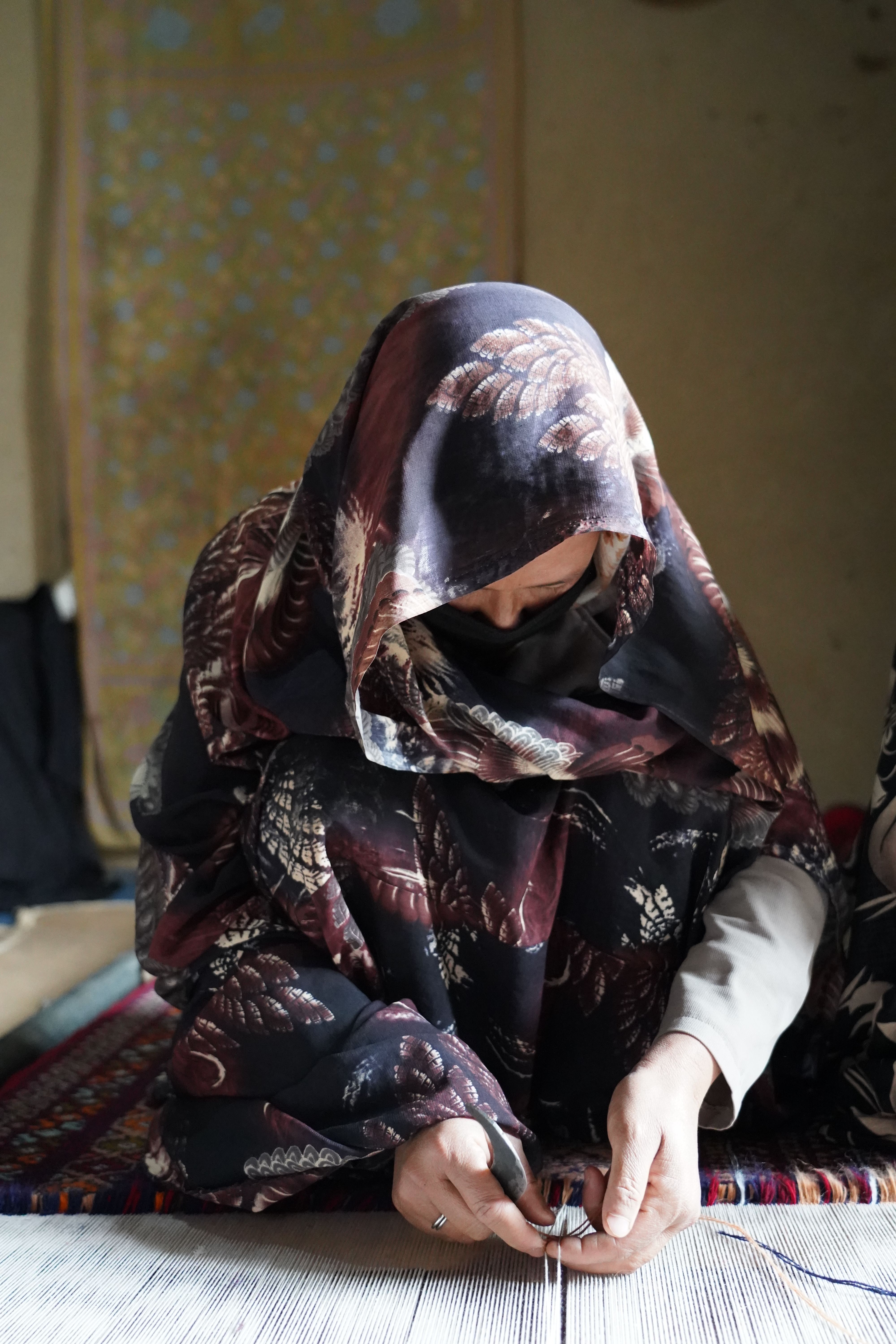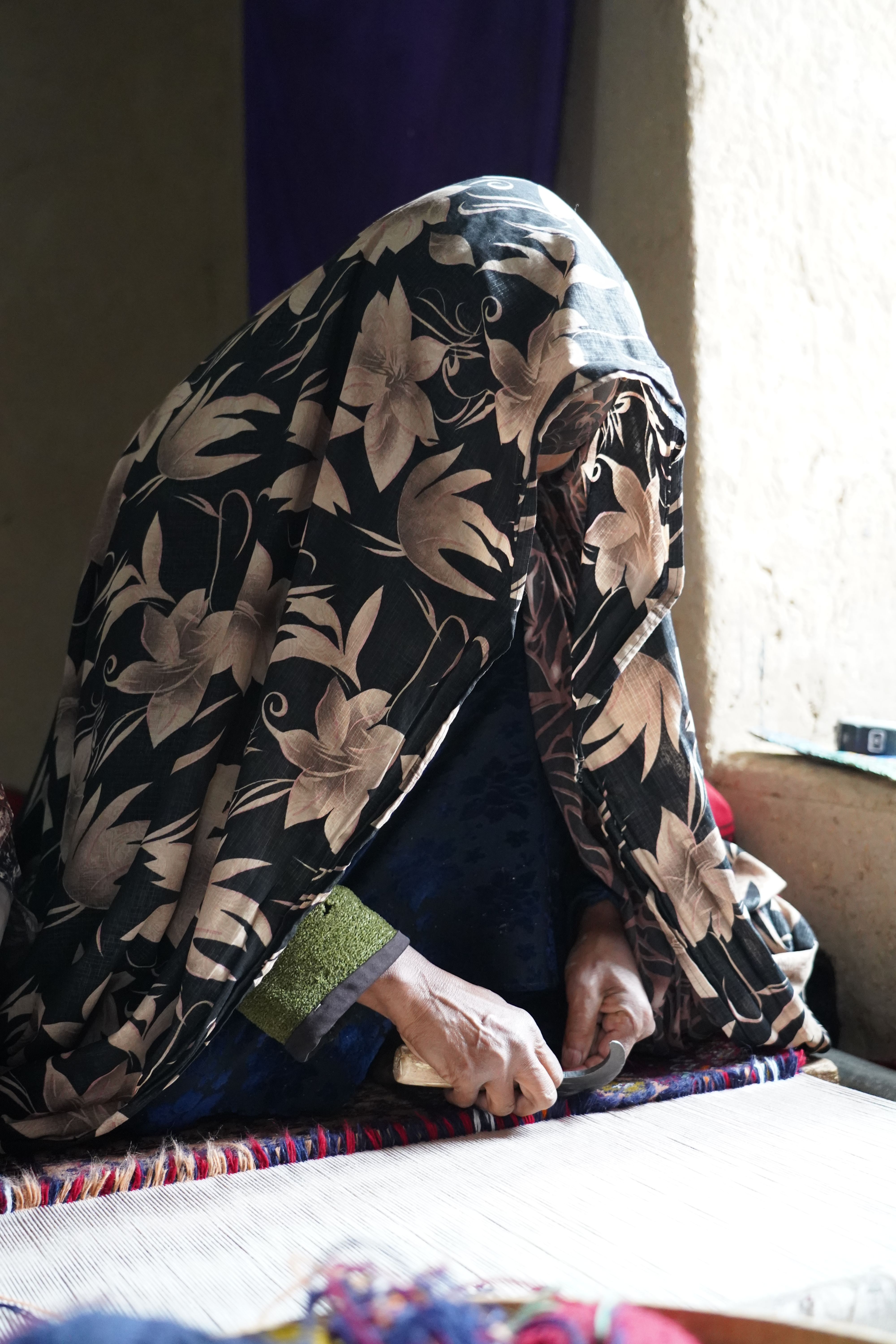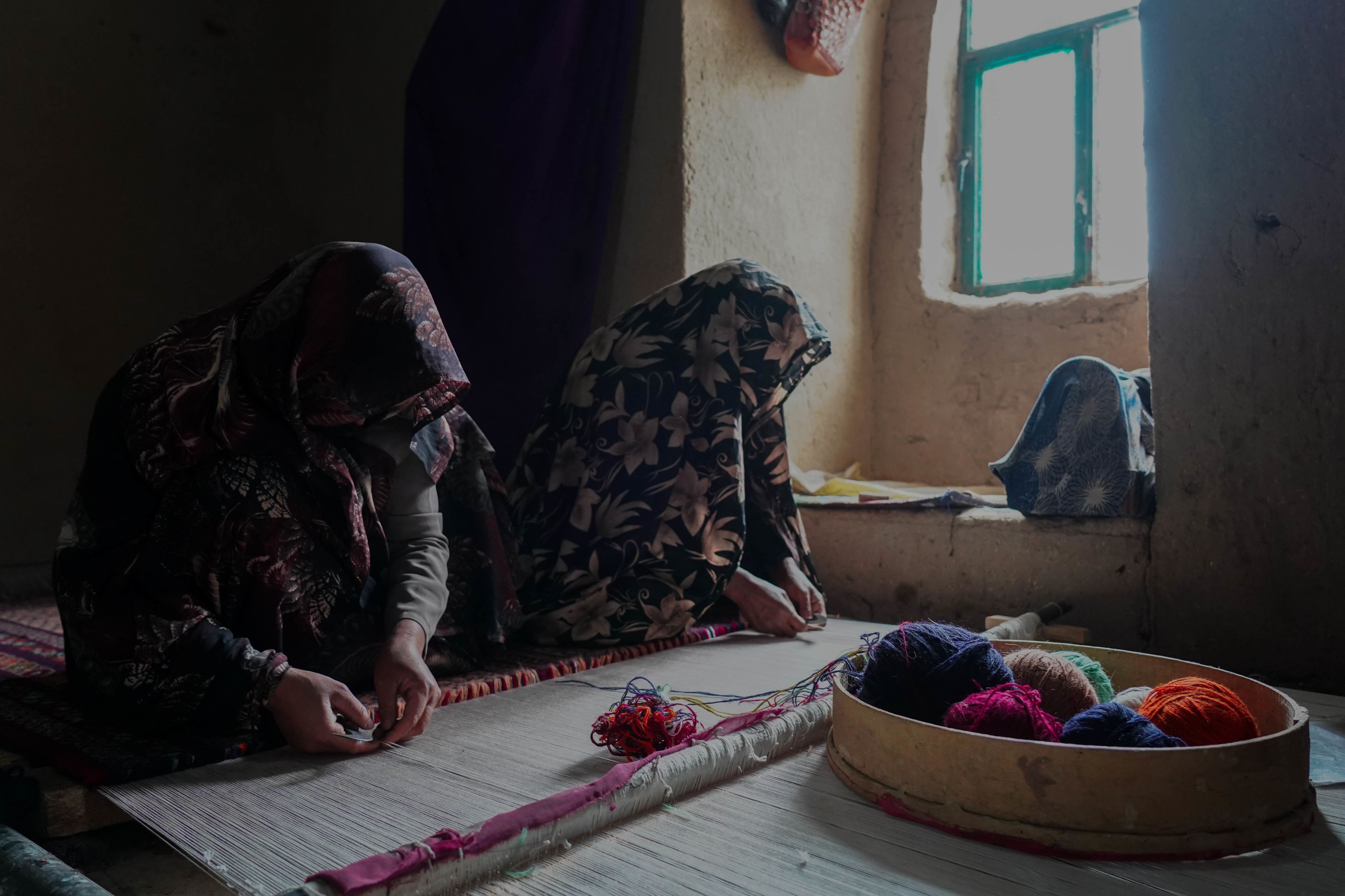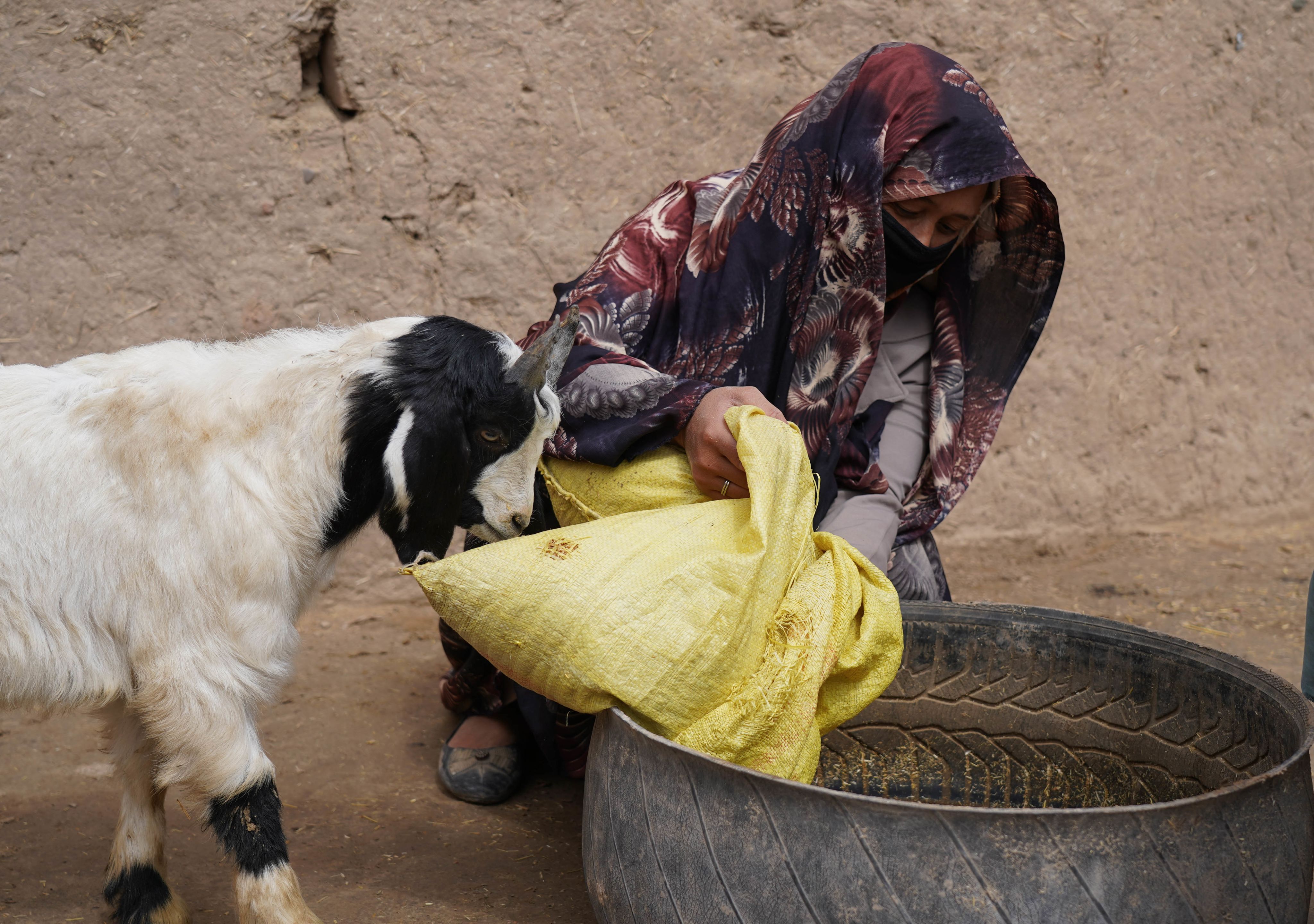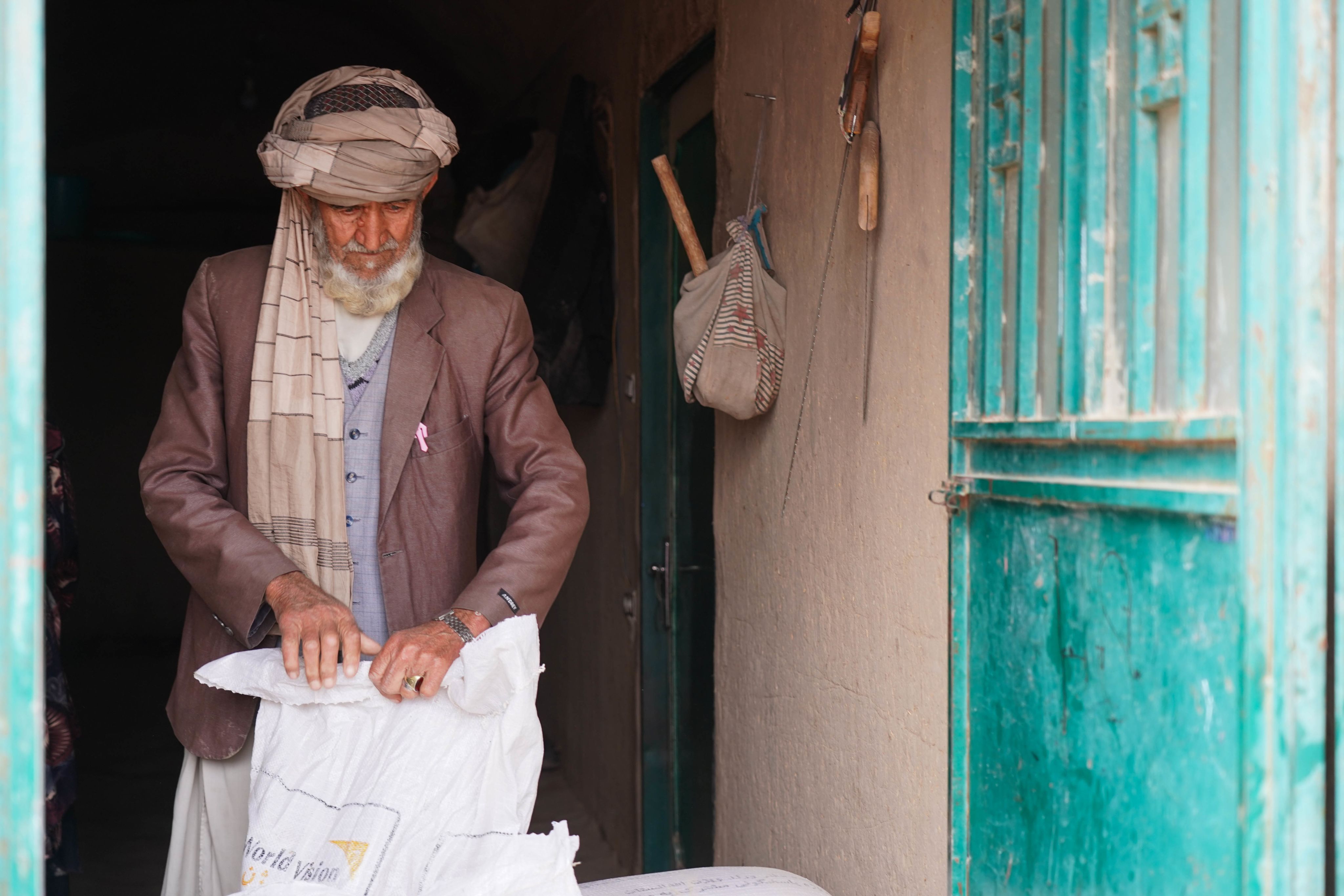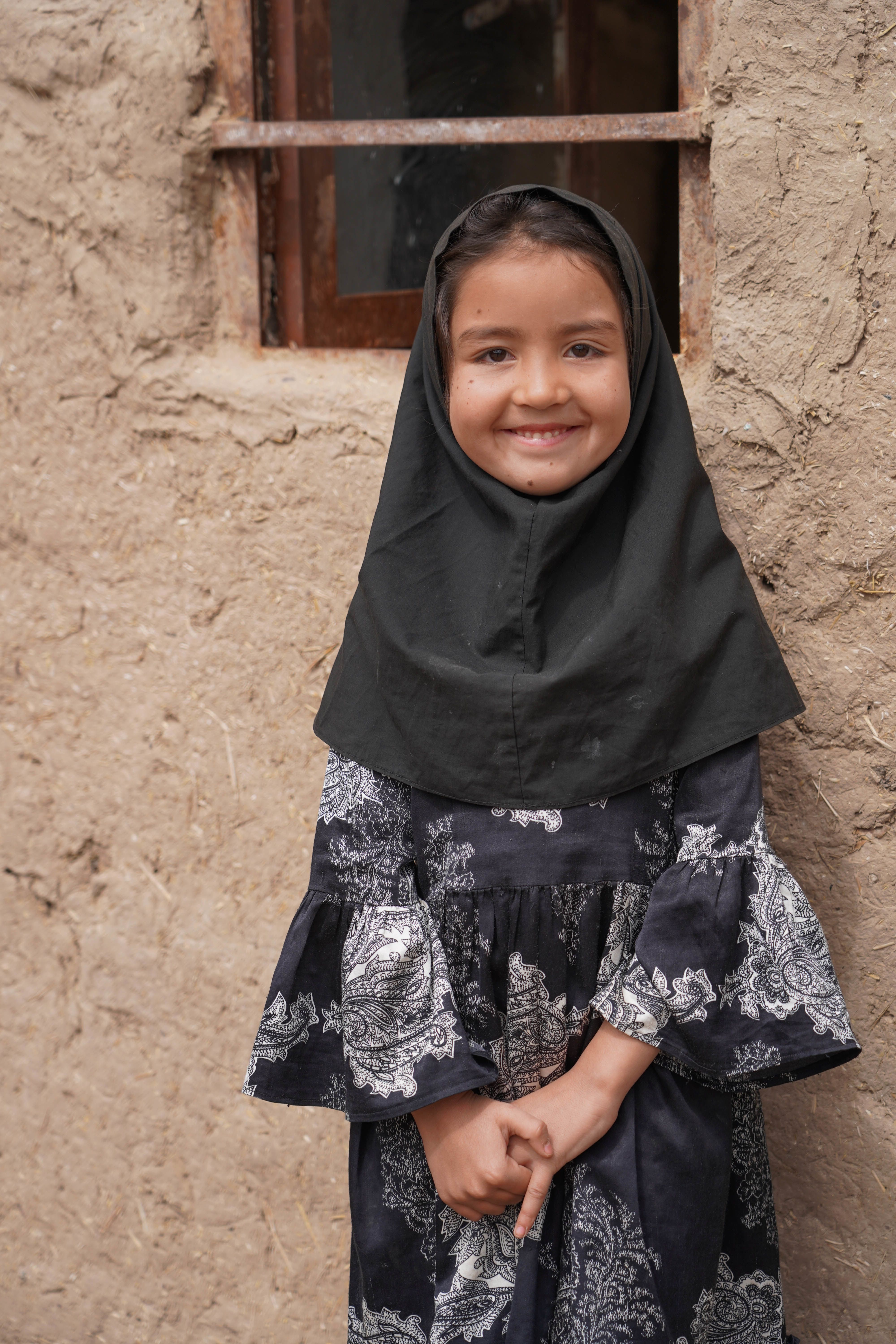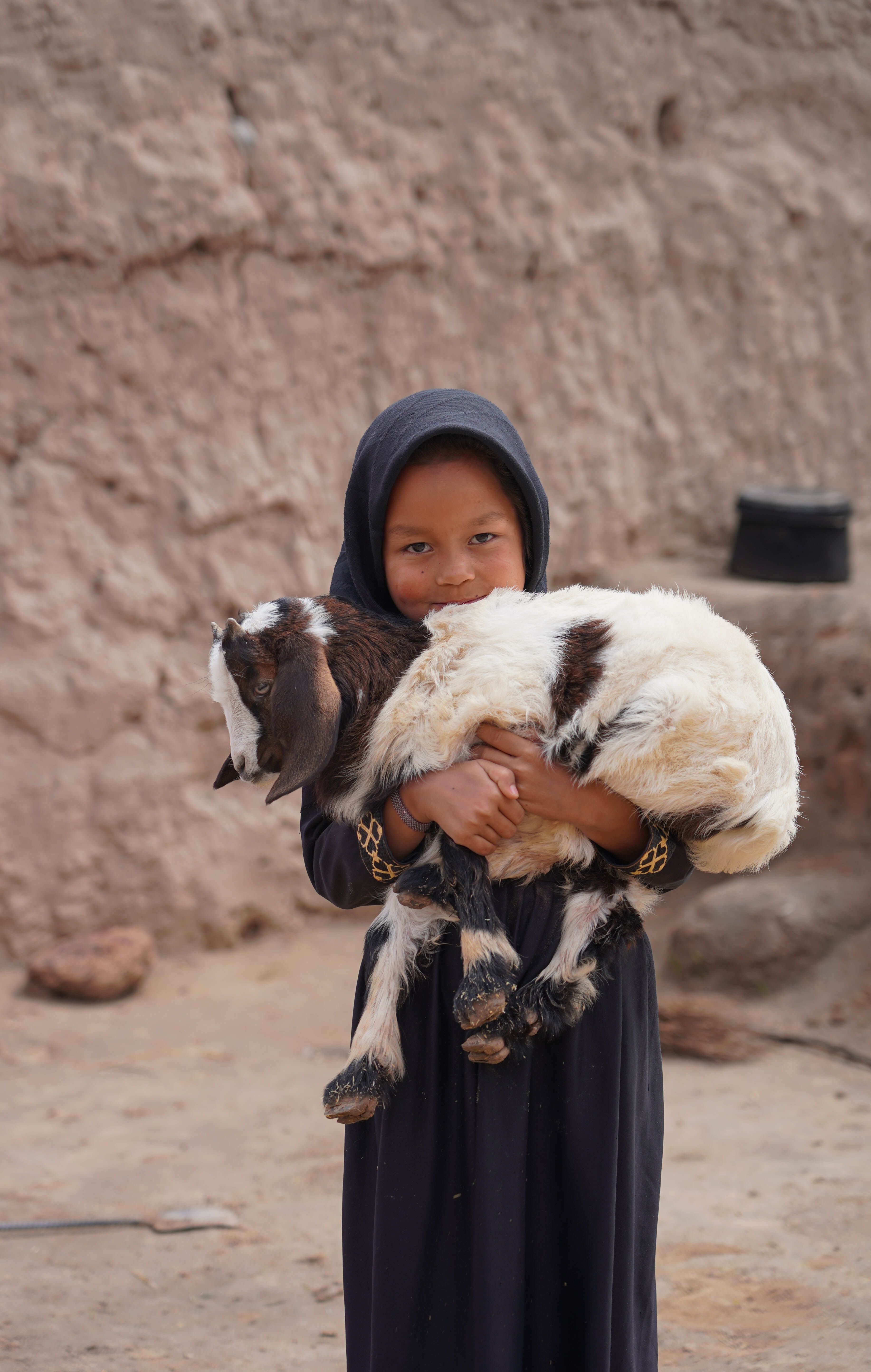A mother, a widow, a carpet weaver, a provider
Life through the eyes of an Afghan woman
By Laurentia Jora, World Vision Afghanistan
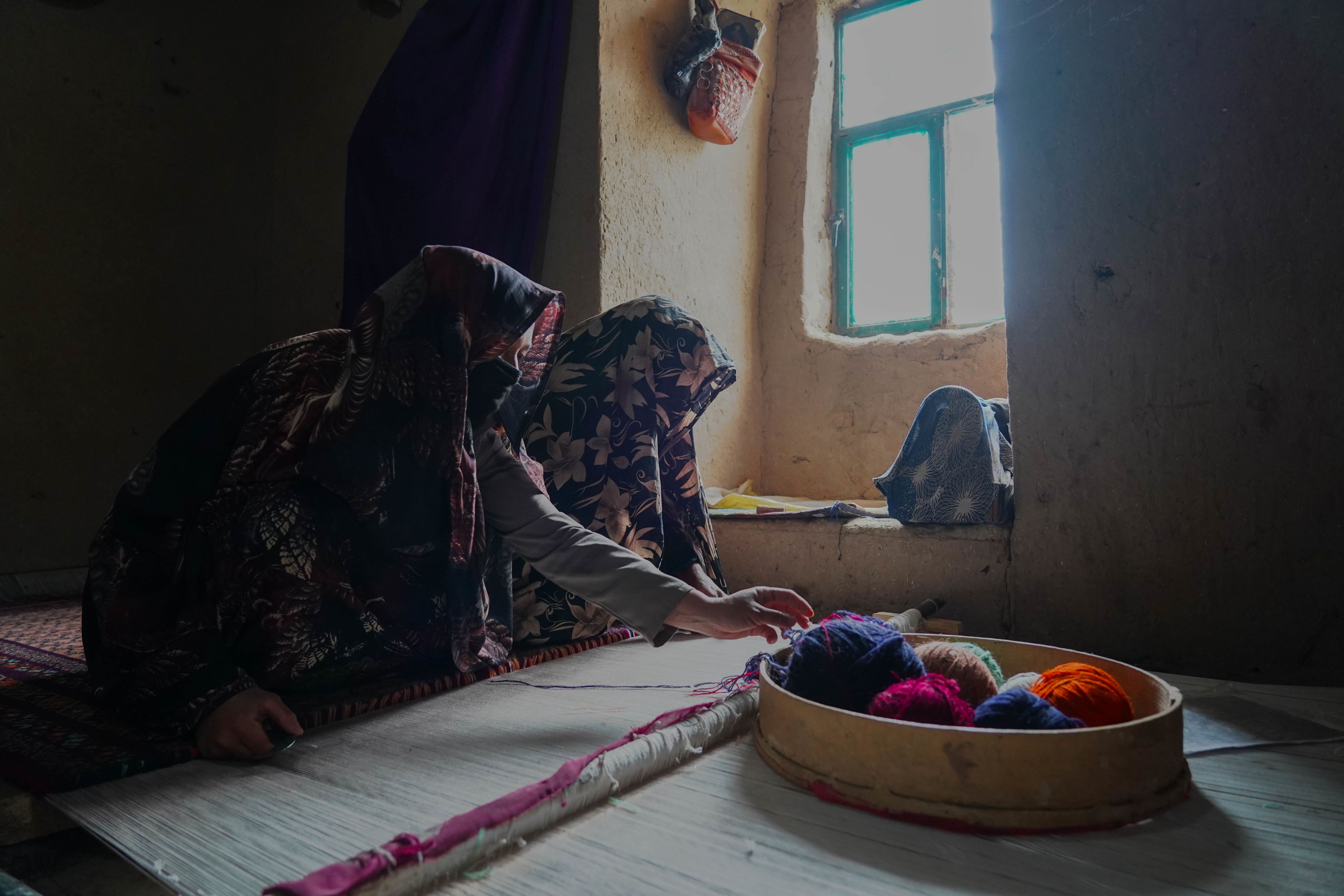
As the sun rises, Maryam, 38, meticulously works on the handmade carpet she has promised to a local distributor.
As the sun rises, Maryam, 38, meticulously works on the handmade carpet she has promised to a local distributor.
Herat province, Afghanistan – The first rays of light slip through the small window, casting a warm glow over the mud-and-clay walls. It’s 5.30 a.m., and Maryam*, moves in silence, about to start her morning prayer. She takes the small red rectangular carpet, and begins to recite the verses, almost whispering.
For two years, she has shouldered the weight of being the sole provider for her three children, a role thrust upon her after her husband's passing from a heart attack.
She prays for strength. She prays for guidance. She prays her three children will never again go to sleep on empty stomachs.
By the time the prayer ends, the room is flooded with golden light. The sun has fully risen. She doesn’t waste a second and diligently turns to her work – an unfinished carpet, promised for sale to a local distributor who also provided the wool.
*Name has been changed to protect her identity.
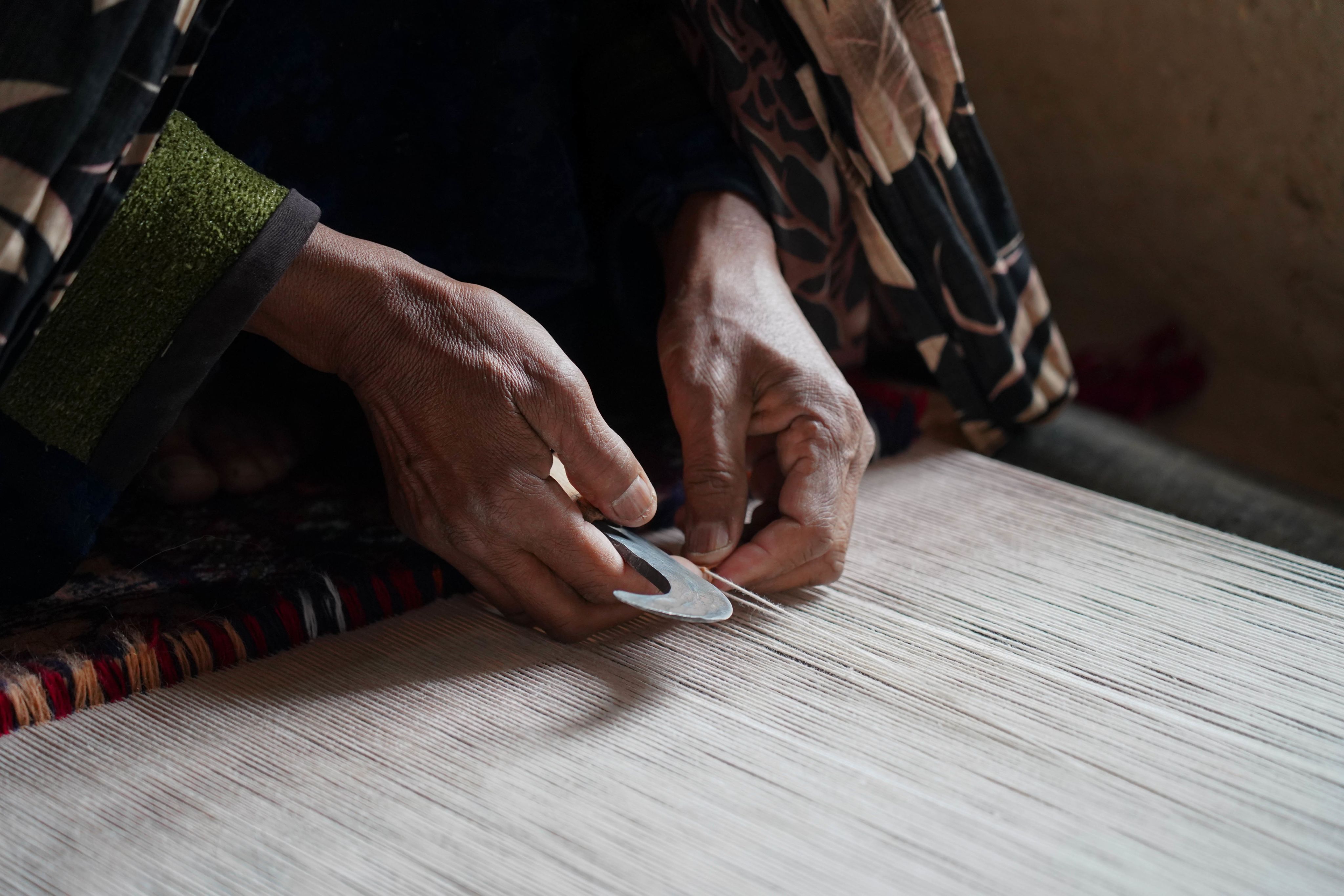
It has already been a month since she has been working on this piece of art. She and her mother-in-law sit side-by-side, their legs crossed, their hands steady as they work the loom. It’s a meticulous process. Knot by knot, thread by thread, they bring the design to life.
It is an art passed down through generations – taught by her mother, who learned from her grandmother, just as she will one day teach her own daughters.
“It takes two months and two pairs of hands to weave a carpet like this one,” explains Maryam as her fingers move with scrupulous precision. For their labour, they were promised 3,000 Afghani – split between the two of them, leaving each with just 1,500 Afghani, about US $20.
When the distributor came with an offer, Maryam didn’t hesitate. She accepted without a second thought. Even if the final product will be sold for five times what she will be paid, she has no other choice.
For one, she simply cannot afford to buy the materials needed for the rug. Living in a remote village, far from bustling markets, selling the work on her own is nearly impossible. The closest market is over a four-hour walk away, and without transportation, the journey is out of reach.
Using a traditional wooden loom, Maryam and her mother-in-law carefully knot each strand of wool by hand, following intricate patterns passed down through generations. It takes two months of precise weaving, trimming, and washing to complete a single Afghan carpet.
Using a traditional wooden loom, Maryam and her mother-in-law carefully knot each strand of wool by hand, following intricate patterns passed down through generations. It takes two months of precise weaving, trimming, and washing to complete a single Afghan carpet.
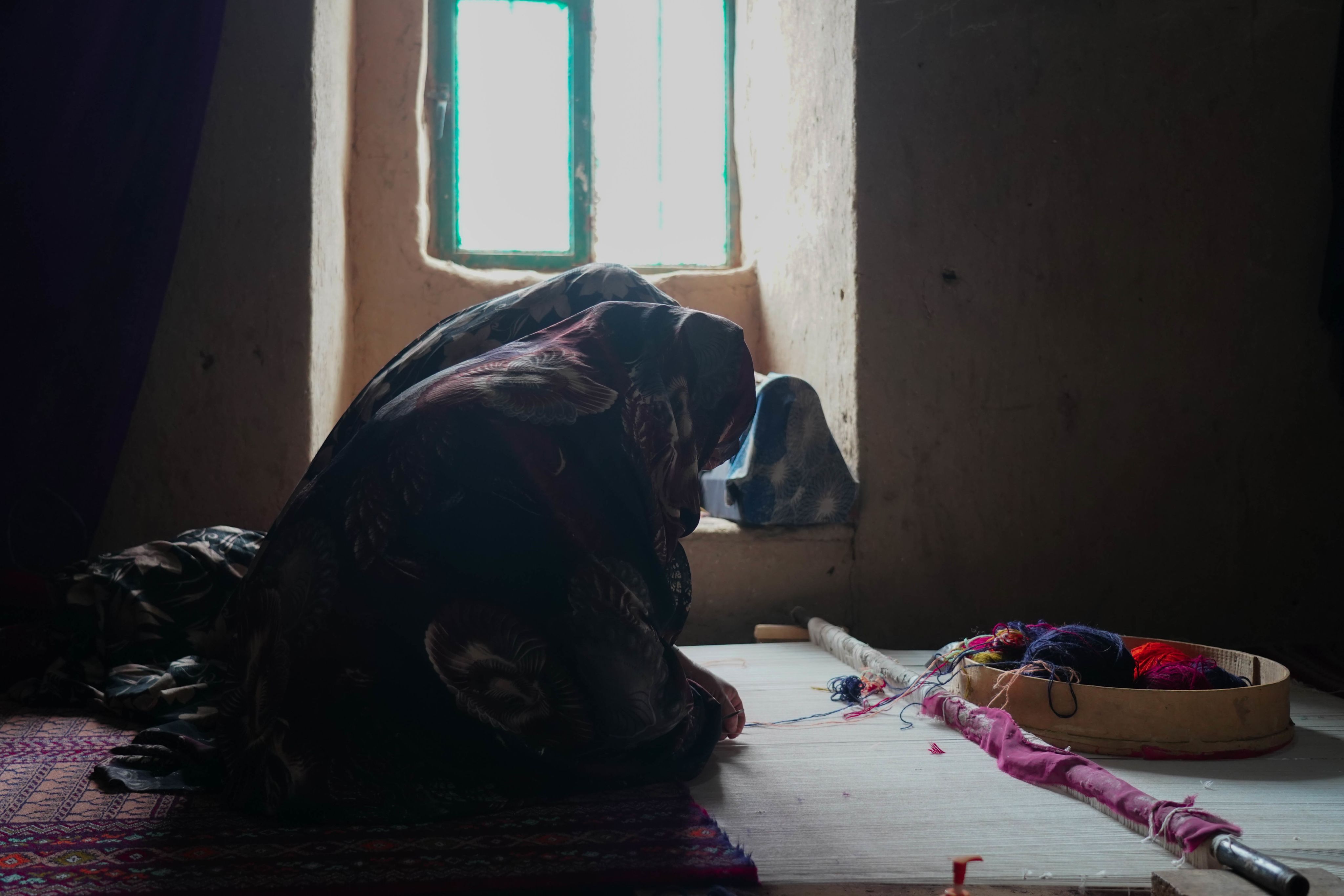
With a population of 41 million, between 1.2 million and 1.5 million Afghans rely on the carpet industry for their livelihoods, with women making up nearly 90 percent of those employed in the weaving and wool-spinning sectors.
With a population of 41 million, between 1.2 million and 1.5 million Afghans rely on the carpet industry for their livelihoods, with women making up nearly 90 percent of those employed in the weaving and wool-spinning sectors.
After women like Maryam create the carpets at home, they are passed to intermediary brokers who sell them abroad, often earning much higher profits than the weavers themselves.
After women like Maryam create the carpets at home, they are passed to intermediary brokers who sell them abroad, often earning much higher profits than the weavers themselves.
By mid-afternoon, the light begins to shift, stretching long shadows across the dimly lit room. It is around 3 p.m. – eight hours of work behind them, but the day is far from over.
The air carries a scent of damp clay. The house, shared by Maryam, her three children, and her in-laws, including their five children, has three small rooms. There is no water or electricity. When the sun sets, darkness will bring their work to a halt. Until then, they continue to weave. “We work as long as the sun allows us to see,” says Maryam
“When my husband was alive, we laboured in the fields when there was work to be done,” she goes on. “When the season comes, and I’m lucky enough to find work, I’ll take anything – washing clothes, harvesting crops, weaving carpets. There is no work I will not do if it means feeding my children.”
There were many days when she held her children close, unable to give them any food. “That is the worst feeling a mother can have – to see hunger in her child’s eyes and know you have nothing left,” whispers Maryam, her dark almond-shaped eyes moist. “On good days, we eat three times. Rice, maybe potatoes. My children learned hunger when they were still in my arms, too small to walk, too young to understand why there was no food.”
Maryam's two daughters – Zahra, 7 (left), and Mahnaz, 9 (right)
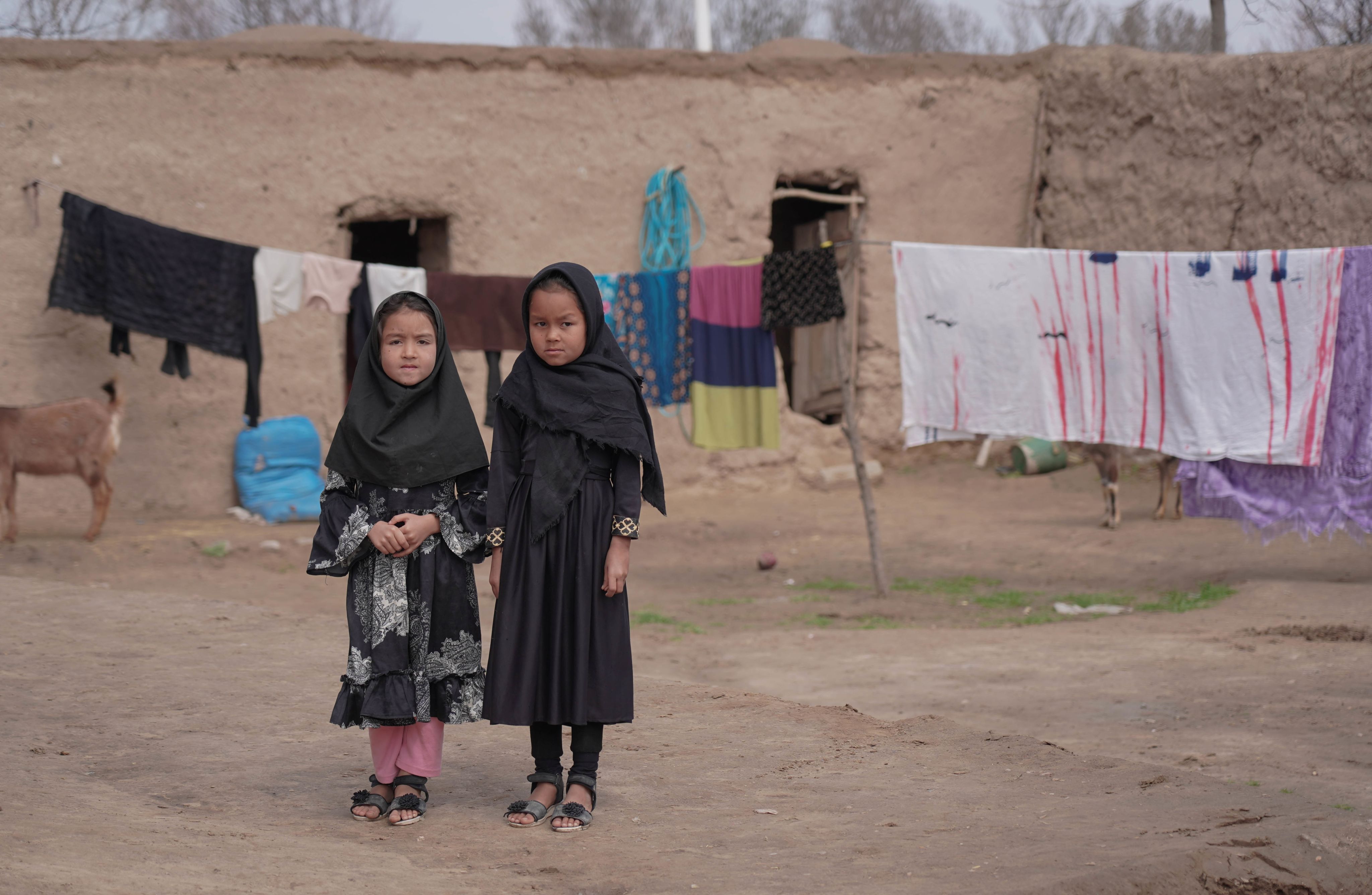
Maryam and her family received support from World Vision through a livestock program, providing them with goats. Funded by the Dutch Relief Alliance, the initiative offers more than just a sustainable source of income. It also ensures a steady supply of food for the family.
In 2025, this initiative aims to support over 200 households across six districts in the country.
“The goats we received made a huge difference in our lives. They gave birth to three other baby goats, and when they grow, we can sell some of them,” says Maryam. With an estimated income of 4,000 Afghanis from selling a young goat, they plan to buy wool and materials to weave new carpets.
Livestock contributes 15% to Afghanistan’s agricultural GDP, and creates over 1.1 million jobs. Major exports include carpets, wool, and cashmere.
“The goats are not just a source of income. We drink their milk every morning. We make yogurt. Some days, yogurt is all we have to eat. It is the difference between hunger and a full stomach,” she adds.
In addition to providing goats, World Vision also supplies food and medications for the livestock.
In addition to providing goats, World Vision also supplies food and medications for the livestock.
In front of their small clay house, Maryam feeds the goats.
In front of their small clay house, Maryam feeds the goats.
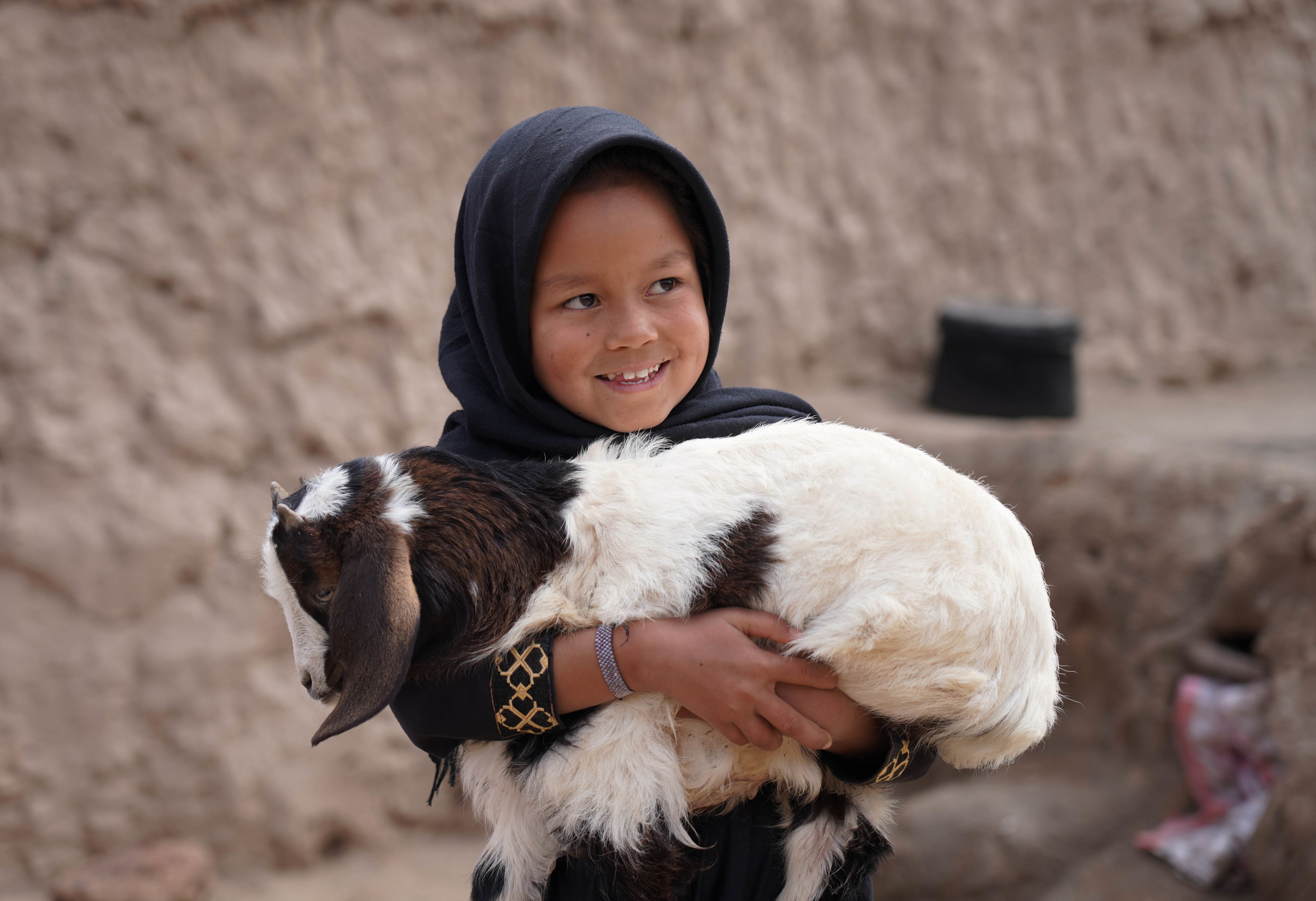
Mohammad, Maryam's father-in-law
Mohammad, Maryam's father-in-law
In 2024, income for female-headed households in Afghanistan dropped by 40%, compared to 16% for male-headed households.
Families living in the rural area face immense challenges, depending on subsistence farming and livestock, making them vulnerable to droughts, floods, and economic instability.
Like Maryam, many lack access to healthcare, education, clean water, and sanitation, putting children, women, the elderly, and people with disabilities at greater risk. “There is a school an hour away by walk, but my children cannot go. They are too small to walk that far alone, and I cannot leave my work to take them. If I do not work, we do not eat,” she says.
Farhad, 5, Maryam's son
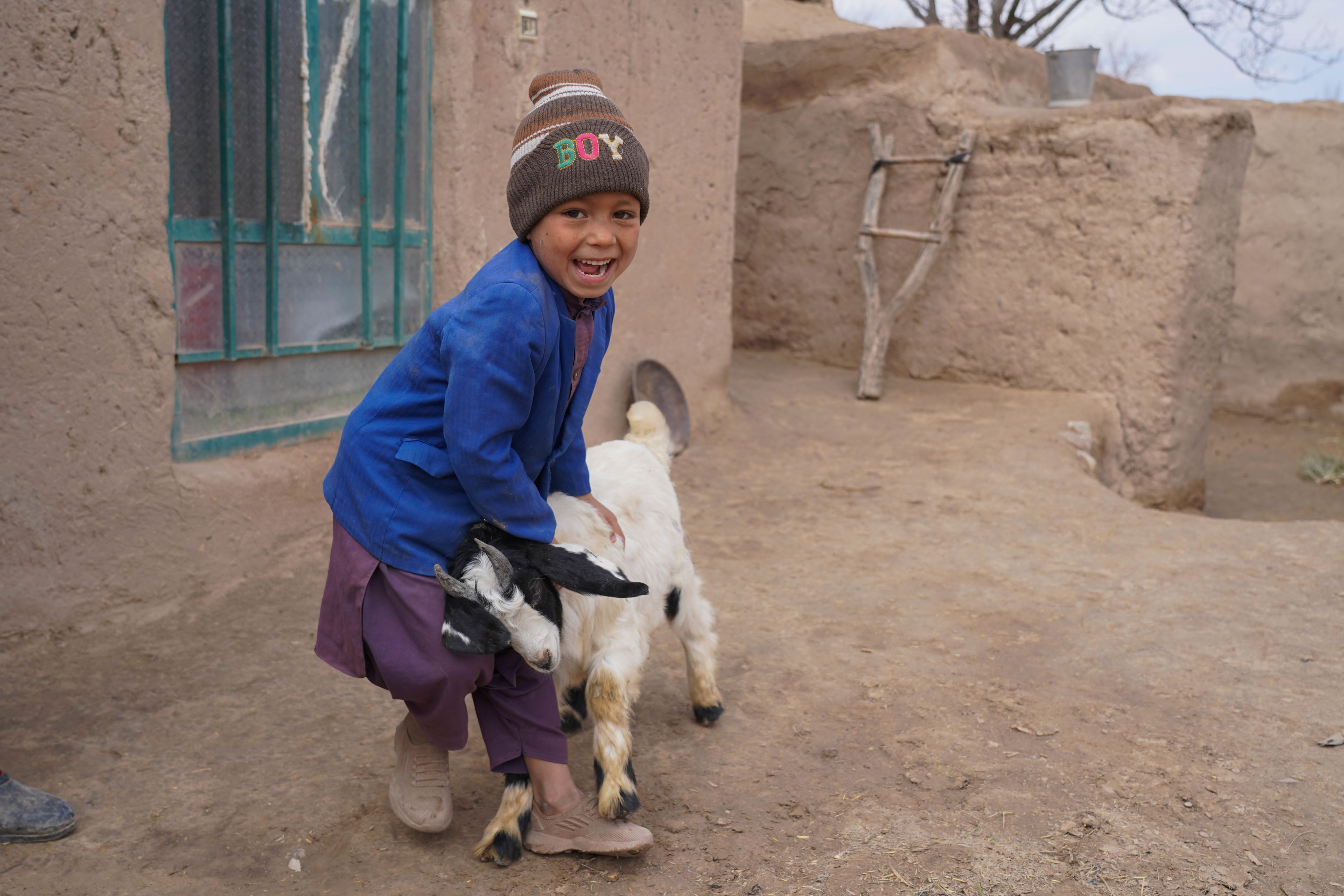
As the sun sets, Maryam pauses, her fingers numb from hours of weaving, and her eyes too blurry to focus on the intricate knots. Her back aches from the constant strain of sitting.
She shares one last wish. “All I want is for my children to have enough. Enough food so they do not wake up hungry. Enough warmth so they do not shiver through winter. Enough health.”
“Every Afghani we earn is spent on food. We have never known what it means to save. But we wake up each morning and we keep going,” she adds. “I want them to have a chance. To sit in a classroom, to hold books in their hands, to learn something beyond survival.”
As little Zahra, 7, Maryam’s daughter, plays with the baby goat, she smiles and shares shyly her dream. “One day, I will go to school and become a doctor.”
Zahra, 7: “One day, I will go to school and become a doctor.”
Zahra, 7: “One day, I will go to school and become a doctor.”
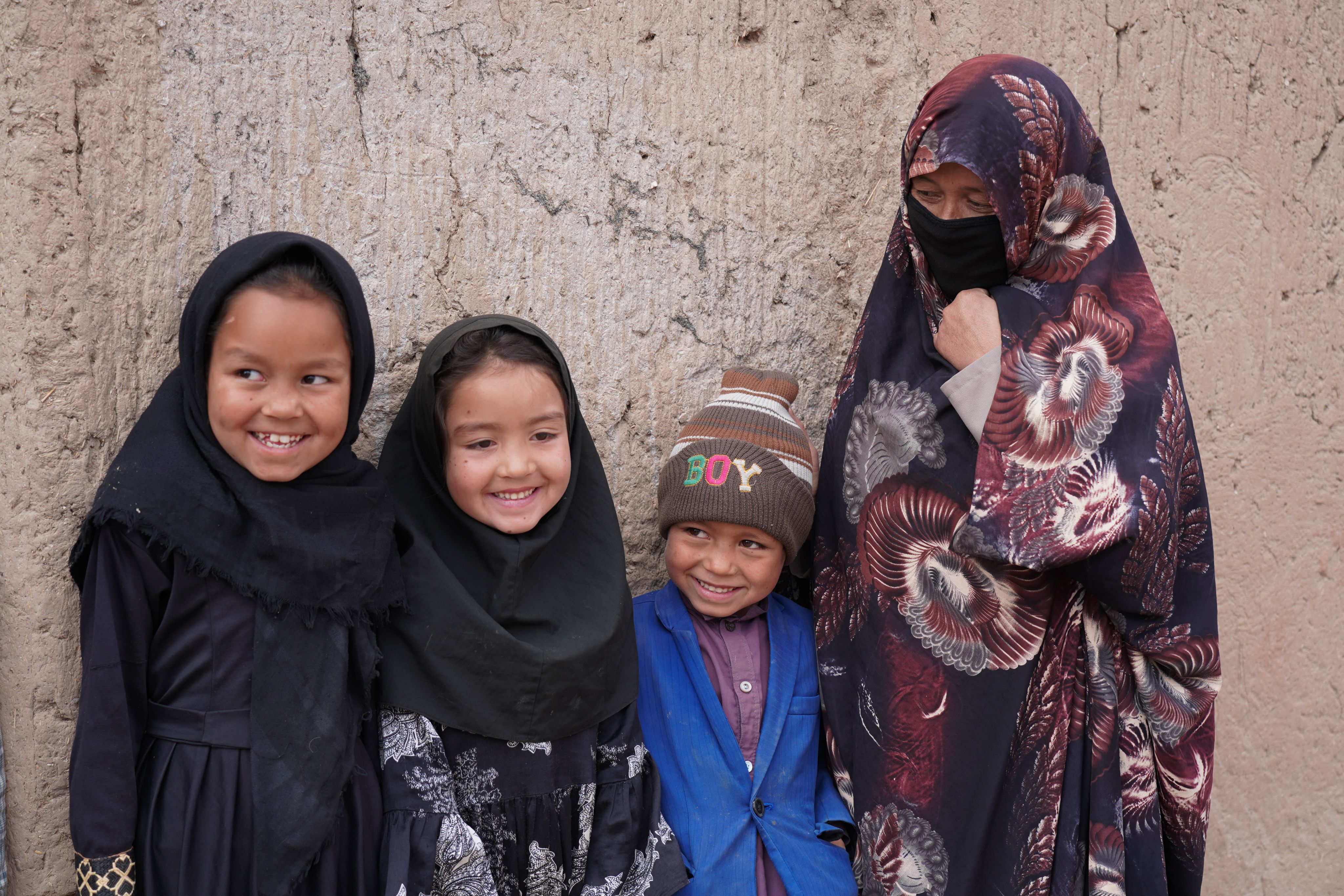
World Vision’s efforts to support livelihoods in Afghanistan have made a significant impact. In 2024 alone, over 43,000 farm-reliant individuals saw improved agricultural productivity and resilience through agriculture-based livelihood support.
More than 13,000 people participated in climate-related information and regreening awareness sessions; over 300 households received assistance through livelihood workforce development programs; and over 360 households benefited from temporary employment opportunities created through local livelihood rehabilitation and creation efforts.
Maryam is the face of millions of Afghan women who fight against the odds. They are driven by an unshakable dream—to give their children the education opportunities they never had.
